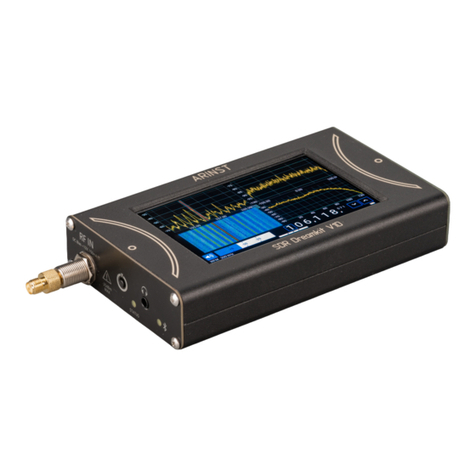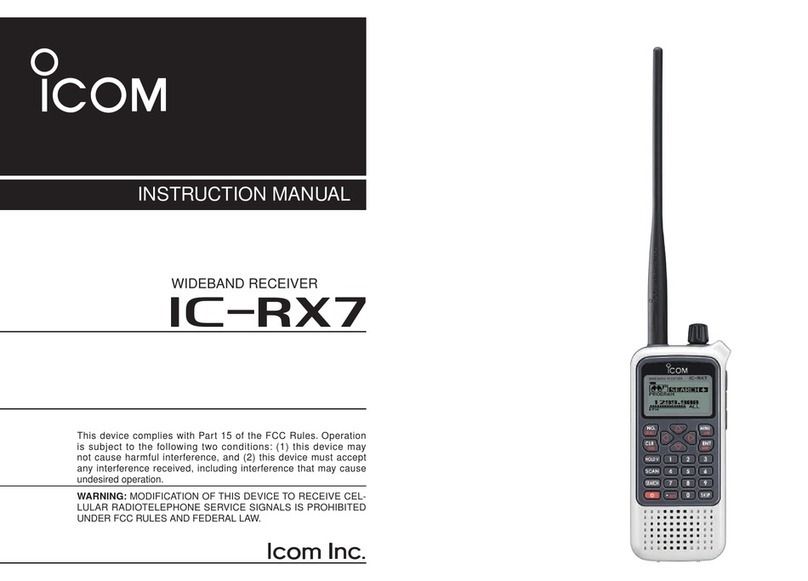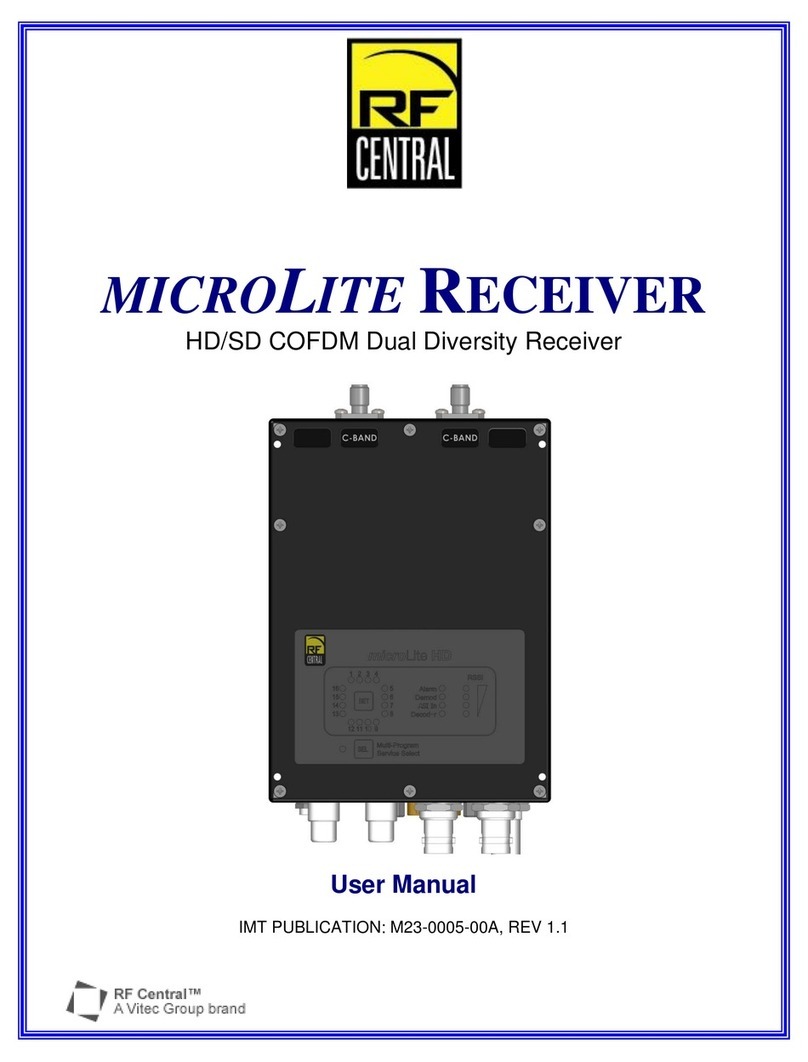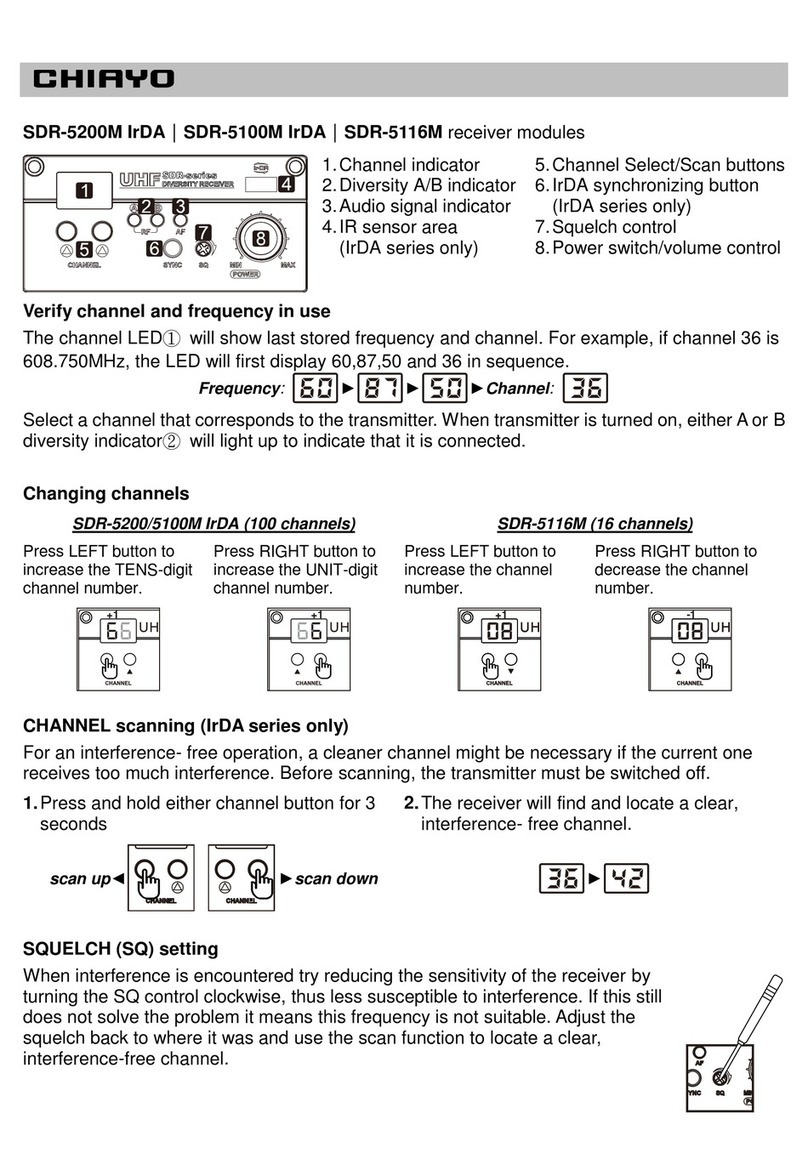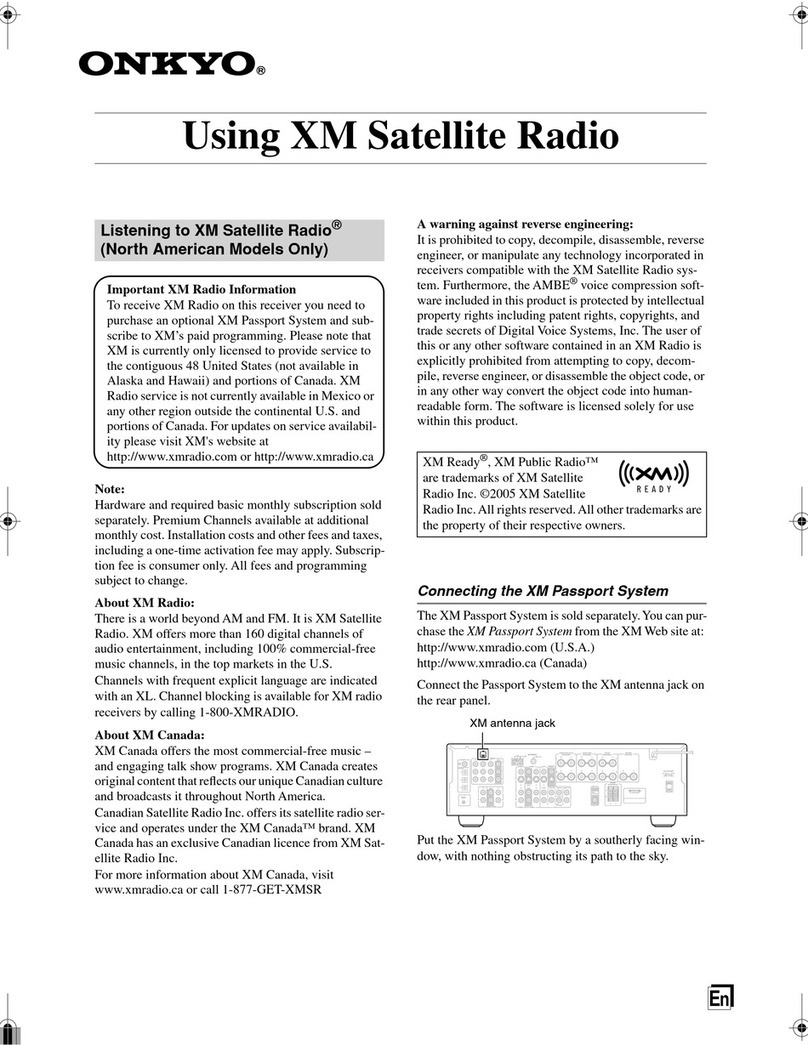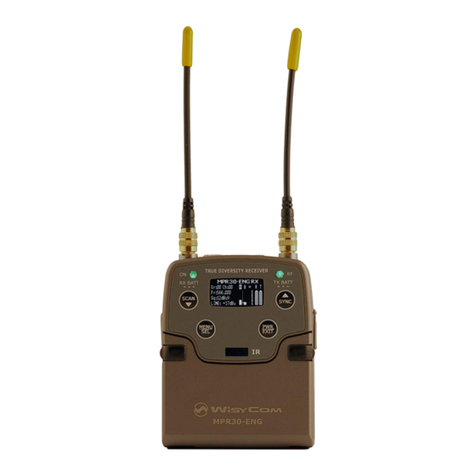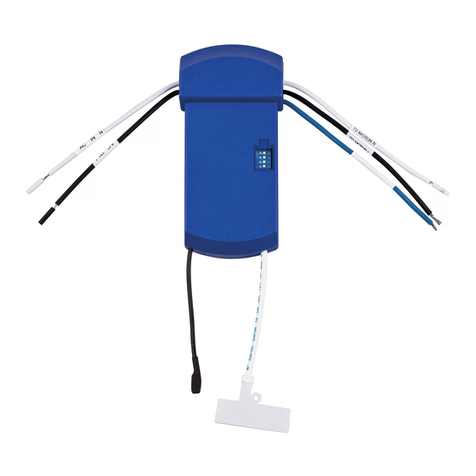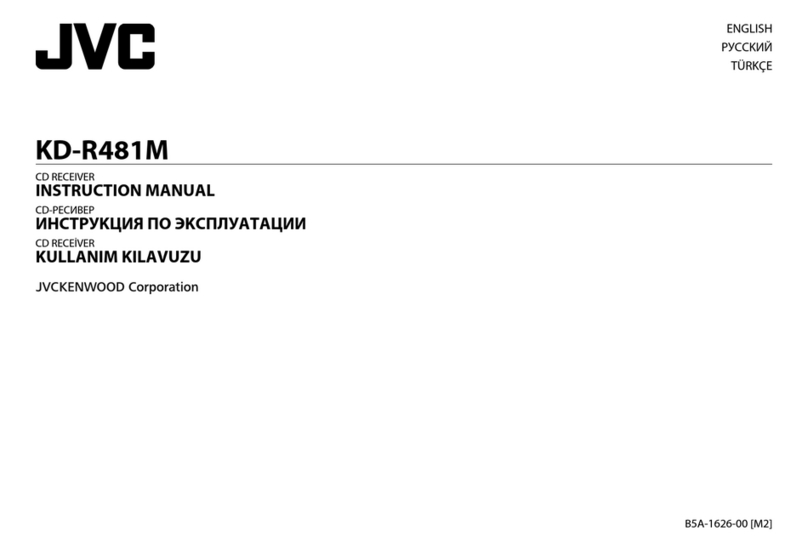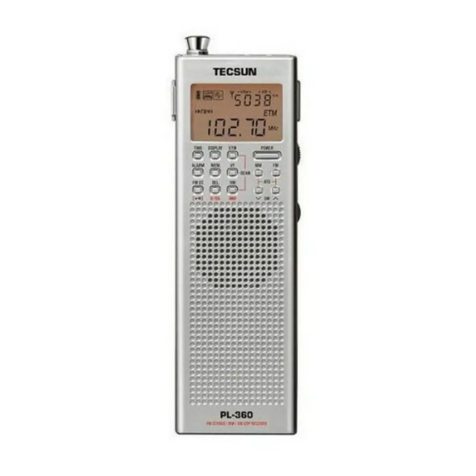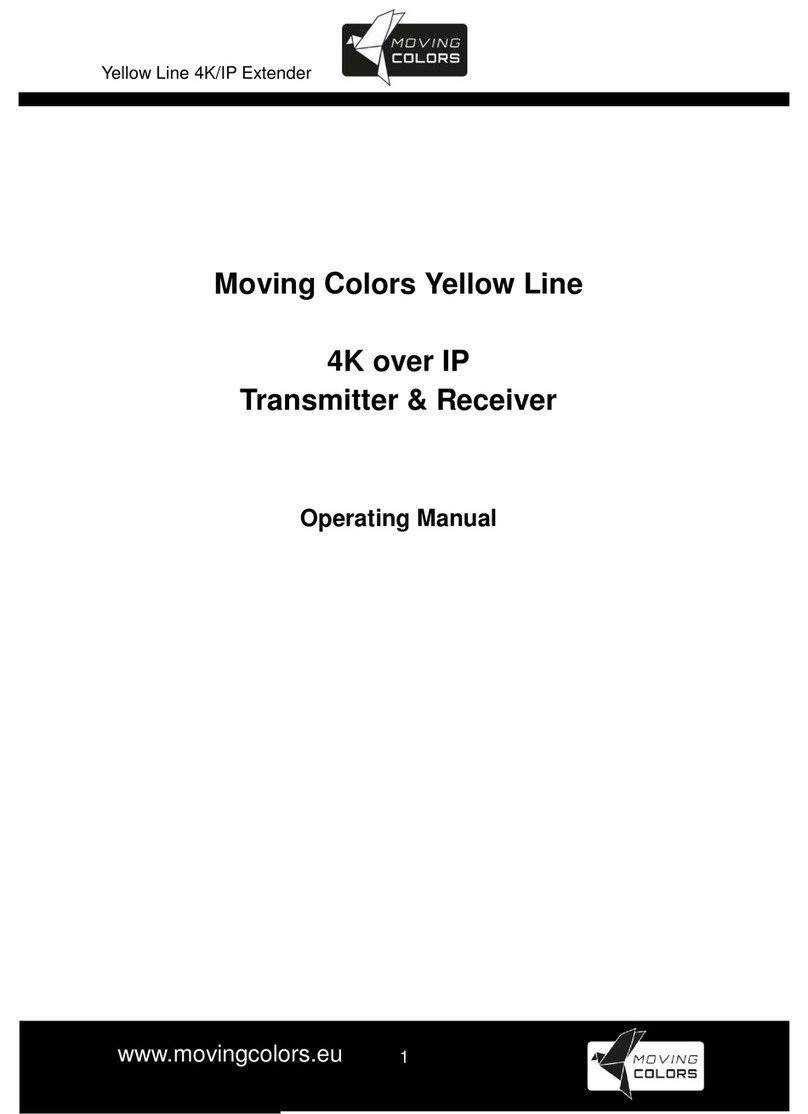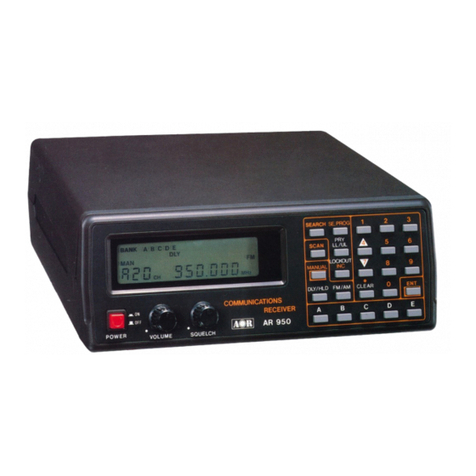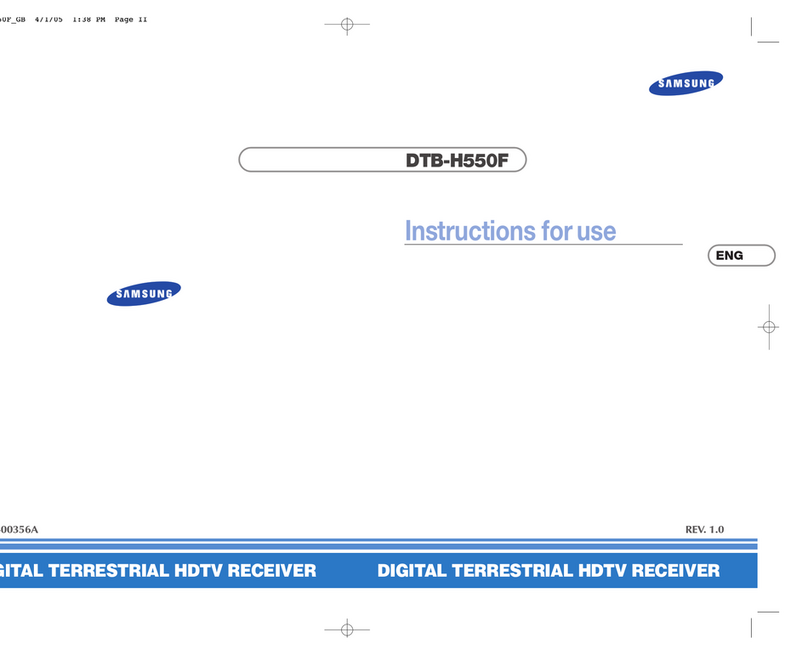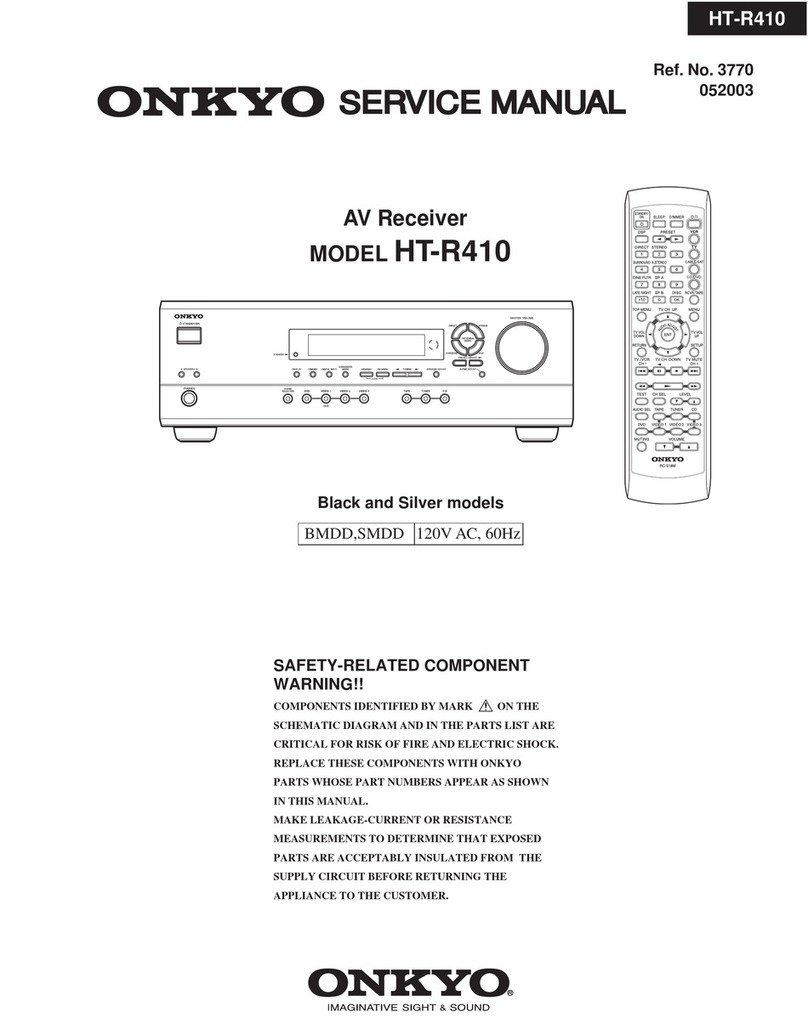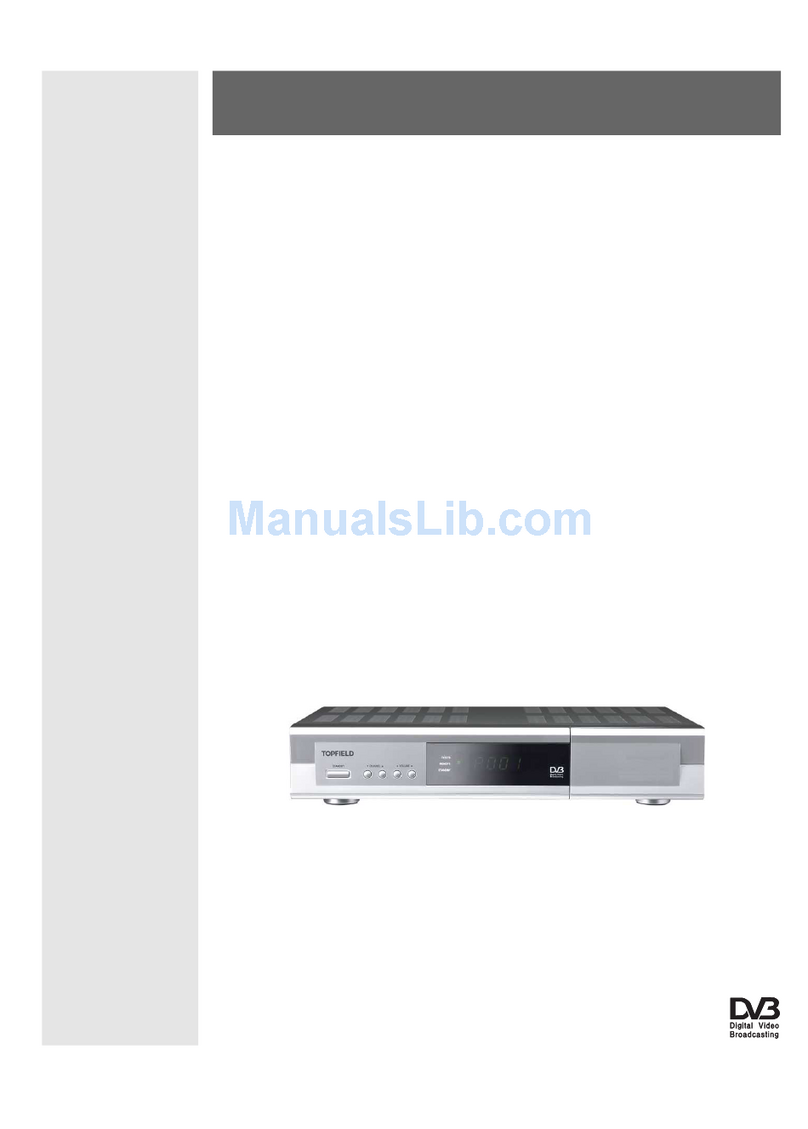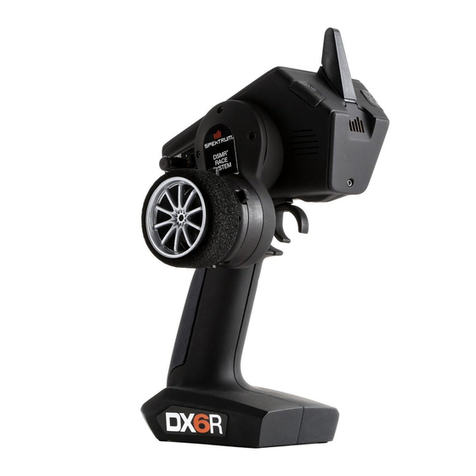Kroks SDR Dreamkit V1D User manual

7. Working with HD SDR
The radio receiver provides the ability to connect to a PC using the USB cable included in the delivery package. The built-in
firmware allows you to use the radio in conjunction with the HDSDR program. The control of frequency setting, band selection,
and gain is implemented. The data stream from the receiver is transmitted in quadratures (IQ stream) over the USB HS bus.
The complete operating manual of the device in PDF format is available on the website https://kroksw.com/
8. Warranty obligations
The manufacturer guarantees that this product meets the specifications specified in this document. The warranty period is 12
months from the date of purchase. During this period, the manufacturer provides a free warranty service.
The warranty does not apply to the following cases:
the warranty period of the product has expired from the date of sale;
there are no documents confirming the date and fact of purchase of the product;
the product intended for personal needs was used for commercial activities, as well as for other purposes that do not
correspond to its intended purpose;
violations of the rules and operating conditions set out in the Operating Instructions and other documentation provided to
the Buyer with the product;
if there are traces of unskilled repairs or attempts to open the Product outside an authorized service center, as well as due
to unauthorized interference with the software;
damage (deficiencies) of the Goods caused by the influence of virus programs, interference with the software, or the use of
third-party software (non-original);
the defect is caused by force majeure (for example, earthquake, fire, lightning strike, instability in the electrical network),
accidents, deliberate or careless actions of the consumer or third parties;
mechanical damage (cracks, chips, holes) arising after the transfer of the product to the Buyer;
damage caused by exposure to moisture, high or low temperatures, corrosion, oxidation, ingress of foreign objects,
substances, liquids, insects into the product;
the defect occurred due to the supply of a signal or voltage or current to the input connectors, terminals, housing that
exceeds the permissible values for this Product;
the defect is caused by natural wear of the Product (for example, but not limited to: natural wear of connectors due to
frequent connection/disconnection of adapters).
Warranty obligations apply only to defects caused by the fault of the manufacturer. Warranty service is performed by the manufacturer
or an authorized service center.
Date of sale ____________________ Seller ________________________________________
(date, month, year) (store name or stamp)
I have read the instructions and operating rules ____________________________
(Buyer's signature)
2250 LLC "Kroks Plus"
394005, Voronezh, Moskovsky pr. 133-263
+7 (473) 290-00-99
https://kroksw.com/
Portable radio receiver
ARINST SDR Dreamkit V1D
Operation manual (product passport)
1. Purpose
1.1. The ARINST SDR Dreamkit V1D portable radio receiver (hereinafter receiver, device) is designed for receiving,
displaying and listening to radio signals with various types of analog modulation. Up to 4 spectrum/waterfall graphs for
different bands can be displayed on the display. The receiver is built using SDR technology, which allows you to
programmatically control the settings of the device. The signal processing and demodulation unit is completely made on a
DSP-based microcontroller. The device can be used both offline and under PC control. The demodulated signal can be listened
to via the built-in speaker, wired headphones or via Bluetooth.
1.2. The receiver is designed for listening to amateur radio communications on the MW / HF / VHF / UHF bands, tuning
analog modulation transmitters, radio monitoring, as well as searching for radio bugs. The aluminum case and the presence of
a built-in battery allows it to be used both in laboratory and practical conditions.
2. Device structure
1. Input connector (RF IN)
2. The button for turning the device on/off and
calling the main menu
3. Indicator STATUS
4. Headphone jack
5. Indicator Bluetooth
6. Left panel
7. Color resistive screen 4”
8. Right panel
9. Battery charging indicator
10. Connector Mini-USB
Due to the constant improvement of the device and software, the manufacturer reserves the right to make changes to
its technical characteristics and completeness.
3. Delivery set
Name
q
uantity
Portable radio receiver
ARINST SDR Dreamkit V1D
1
Adapter
SMA
(
female
)
-
SMA
(
female
)
to protect the connector from wear
1
Cable
USB2.0(male)
-
A
–
mini
-
USB
1
Operation manual (product passport)
1
P
ackage
1
When purchasing a radio receiver, check its completeness.
Attention! After the purchase of the receiver, claims for incompleteness are not accepted!

4. Specifications
Parameter value
Working frequency range
1
-
3
1
00
MHz
Maximum sampling rate of quadrature channels
6
MHz
Maximum width of the viewing band
5
MHz
Minimum frequency resolution
1
Hz
ADC bit rate
16
bit
Minimum
detectable signal
-
133
dBm
Sensitivity, less
0,3
u
V
Blocking dynamic range at ± 20kHz offset
70
-
80
dB
Input impedance
50
O
h
m
Input standing wave ratio, no more
2
(1
,
3
type
)
Reference
g
enerator
TCXO
26
MHz
±0.5
ppm
Types of modulation
AM, LSB, USB,
DSB, NFM,
WFM/STEREO/RDS
Digital bands for broadband demodulation
400, 300, 200, 100
kHz
Digital bands for narrowband demodulation
20, 10, 8, 6, 4
kHz
Maximum DC Input Voltage
12
V
Maximum input signal power supplied to the port
-
3
5
dBm
Displayed
graphs
■
Baseband;
■
IF1;
■
IF2 (MPX);
■
W
aterfall;
■
Audio;
■
RDS;
■
S
-
meter
Additional options
AGC, Noise reduction, Noise blanker, Notch filters, Equalizer
The number of memorized user settings
40
Audio out
Built
-
in speaker,
headphones, Bluetooth
Maximum
power of the built
-
in speaker
2
W
Built
-
in audio codec
24
bit
Supply voltage for external devices
12
V
Maximum current consumed by an external device connected to the connector
RF
IN
150
mA
Screen diagonal
4
”
Screen type
touch resistive
Screen
resolution
800×480
Maximum consumed
current, no more
when charging the battery
≤ 2
A
1
when operating from USB with battery charging
2
≤ 2
A
Battery capacity
5000
mAh
Battery continuous operation time
3
~ 4
h
Battery charging time
~
3,5
h
PC
connection interface
HS USB 2.0
Operating temperature range
0 … +40°С
Overall dimensions (L×W×H)
150x81x27
mm
Weight
0,4
kg
1 When connecting the device to a charger with an output current of at least 3A.
2 If your PC is limited to the maximum current supplied to the USB port, the instrument will automatically limit the
maximum charging current according to the current USB specification.
3 At an ambient temperature of plus 20 ± 5 ° C after a full charge of the battery. The display is on, the volume of the built-
in speaker is at a medium level.
5. Turning on the receiver
Do not connect the RF input jack while the charger is connected or USB connected to a PC. If these recommendations
are not followed, the radio receiver may fail.
The use of the receiver in the open air during snowfall or rain is prohibited. If the receiver is brought in during the
cold season from a cold room or from the street to a warm room, do not turn it on for a sufficient time for the condensate
to evaporate from the receiver.
5.1. Make sure that the radio receiver has no external damage and the battery is charged. Charge the discharged battery.
When the charger is connected, the maximum charging current is automatically determined. To reduce the battery charging
time, it is recommended to use industrial power supplies (chargers) with a maximum output current of 3 A as a charger. When
charging is complete, the CHARGE indicator will turn off.
It is allowed to operate the device while charging the battery, provided that the power source is capable of providing an
output current of at least 1500 mA. If the charger or the USB port of the PC is not able to provide the current required for the
operation of the device and charging the battery, the device will automatically lower the current consumption until the battery
is completely stopped charging.
5.2. Press and hold button (2) for 2 seconds. The receiver turns on. Tune the receiver to the frequency of interest, select
the required type of demodulator, adjust the required graphs. User settings will be saved in the device's memory and will be
automatically installed on subsequent power-ups.
During operation, the receiver display may generate pulse interference at some frequencies. To listen to the
broadcast without interference, it is recommended to turn off the display by double pressing the multifunctional button (2).
5.3. To turn off the device, press and hold the button (2) for 2 seconds. The device screen will go off, the device will turn
off. Each time the device is turned off, the main user settings are recorded in non-volatile memory, which allows you to avoid
configuring the device at the next turn-on.
6. Device screen
6.1. The instrument displays graphs of the spectrum /
waterfall of the bands of interest. The current settings and
interactive buttons for controlling the instrument interface
are located at the bottom of the screen.
6.2. The main components of the screen:
(1) - graphs area;
(2) - the button for controlling the display of graphs. When
moving with pressing and holding, the ratio of the sizes of the
graphs on the screen changes. Pressing and holding without
moving opens a menu for selecting the types of graphs and
diagrams to display;
(3) - volume control button for audio devices;
(4) - S- meter;
(5) - the pull-out area of the device menu
(6) - tuning frequency selector with buttons for discrete
adjustment by selected digits;
(7) - information about the type of the current demodulator and demodulation bandwidth;
(8) – built-in battery status indicator.
6.3. Built-in battery status indicator:
lightning indicator-the battery is charging;
the battery indicator is completely filled with white color – the battery is fully charged;
indicator in the form of a white contour of the battery – the battery is low, it is necessary to charge it;
the device displays a message about a critical charge level – the battery is completely discharged, the device will
automatically turn off.
The red vertical line on the graphs indicates the current frequency of the receiver setting. The gray background around the
setting pointer reflects the selected demodulation band. As the demodulation band changes, the width of the gray area will
change.
The ARINST SDR Dreamkit V1D radio receiver has the ability to supply an internal voltage of 12V to the RF input. The
implementation of this function allows you to supply power to external preselectors, antenna amplifiers, low-noise amplifiers(
LCS), emitter repeaters, etc. active devices. The maximum current consumption for external devices should not exceed the
value specified in Table 4. Power on for external devices is carried out in the main menu of the receiver on the «Device» tab.
In case of exceeding the maximum permissible current for powering external devices, specified in Table 4, the voltage from the
RF connector will be removed, and the user will see a warning on the maximum current exceeding «DC overload detected!»
оn the screen. For further use of the power supply of the external device from the radio receiver, it is necessary to reduce the
current consumed by the external device, or connect a device, the maximum current for which does not exceed the value
indicated in Table 4. After that, turn on the power at the RF input using the switch in the menu.
It is strictly forbidden to connect a short-circuited load to the input of the receiver and supply an internal voltage to
the RF connector. It is also not allowed to connect a short-circuited load to the input if the voltage is already applied to the
RF connector. This will damage the radio receiver !!!
1
2
3
4
5
6
7
8
Other manuals for SDR Dreamkit V1D
1
Other Kroks Receiver manuals
